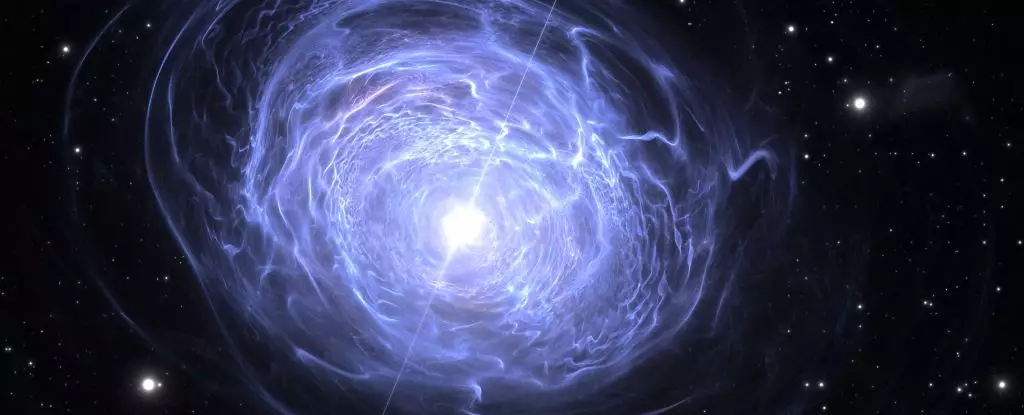In a recent discovery that has left astronomers scratching their heads, a strange signal has been detected emanating from a neutron star known as ASKAP J193505.1+214841.0, or ASKAP J1935+2148 for short. This neutron star is located in the Milky Way, approximately 15,820 light-years away from Earth. What has left scientists baffled is the peculiar nature of the signals being emitted by this star. Unlike anything previously observed, ASKAP J1935+2148 exhibits periods of strong pulses, weak pulses, and at times, no pulses at all.
A Puzzling Anomaly in Neutron Star Evolution
The team led by astrophysicist Manisha Caleb from the University of Sydney is struggling to unravel the mystery behind these erratic pulse patterns. Neutron stars are formed when a star within a specific mass range between 8 to 30 times the mass of the Sun dies in a supernova explosion, leaving behind a dense core. This core collapses under gravity to form an ultra-dense object, known as a neutron star. Neutron stars can exist in various forms such as base neutron stars, pulsars, and magnetars, each exhibiting distinct behaviors. ASKAP J1935+2148, however, defies classification into any existing category of neutron stars, posing a significant challenge to current models of neutron star evolution.
During observations using the Australian Square Kilometre Array Pathfinder (ASKAP) and the MeerKAT radio telescope, researchers discovered that ASKAP J1935+2148 displays a regular period of pulses lasting 53.8 minutes. However, the pulsations exhibited by this neutron star are far from typical. One pulse mode stands out for its extreme brightness and linear polarization, only to abruptly disappear, followed by a period of no pulsations. When the pulsations resume, they are significantly fainter and exhibit circularly polarized light. These erratic pulsation modes defy the conventional behavior expected from neutron stars.
The discovery of several other objects emitting peculiar signals in the southern sky, such as GLEAM-X J162759.5-523504.3, GPM J1839-10, and GCRT J1745-3009, suggests a possible connection. While these objects exhibit diverse behaviors, they share similarities with neutron stars and could be related. Caleb and her team propose that ASKAP J1935+2148 may represent a transitional phase between different states of neutron stars. The variations in pulsation modes observed in ASKAP J1935+2148 are believed to be linked to magnetospheric changes and processes, indicating the existence of a new class of magnetars that may be evolving into pulsars.
The enigmatic signals emitted by ASKAP J1935+2148 challenge the current understanding of neutron star evolution and classification. The unconventional behavior displayed by this neutron star and other mysterious objects in the cosmos raise intriguing questions about the diversity of neutron stars and their evolutionary pathways. Further research and observations are needed to unravel the secrets hidden within these peculiar signals and shed light on the complex nature of neutron stars in our universe.



Leave a Reply